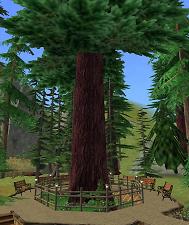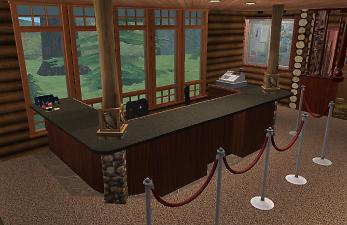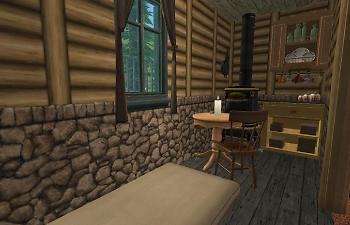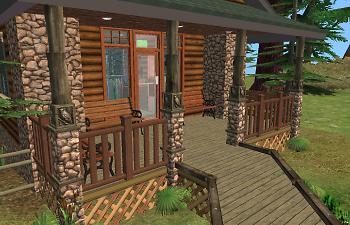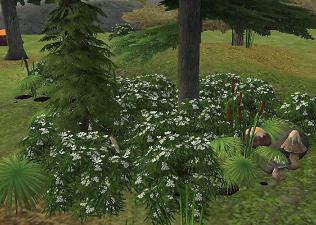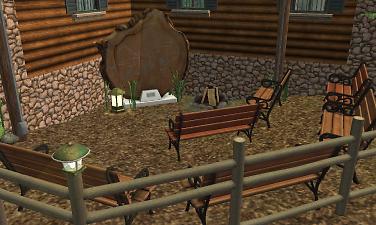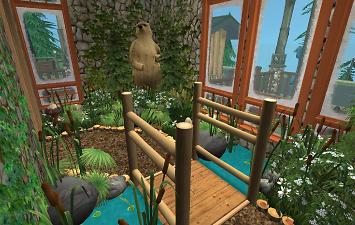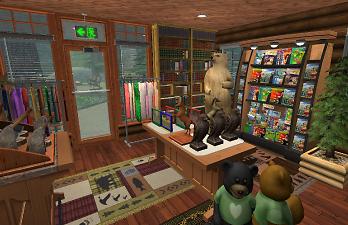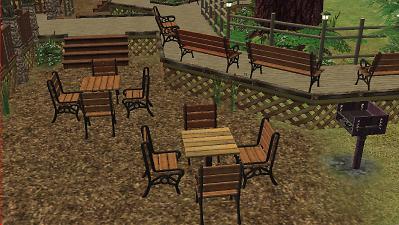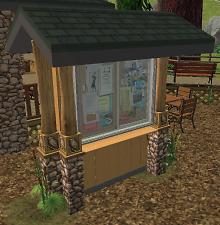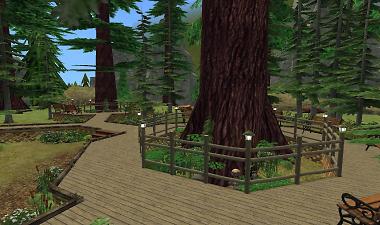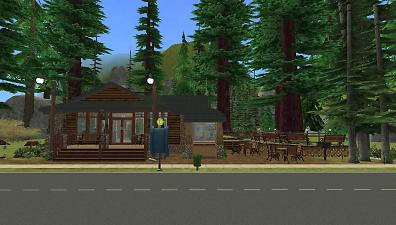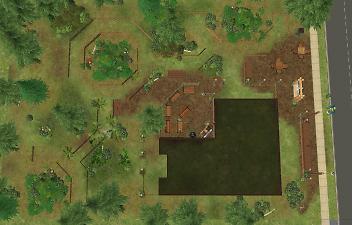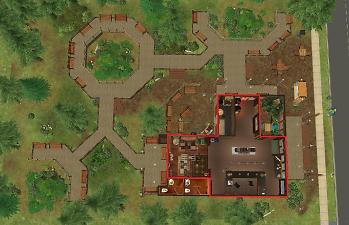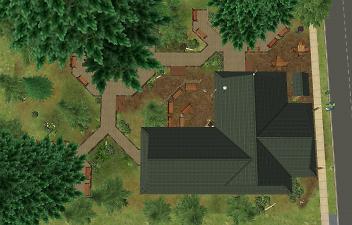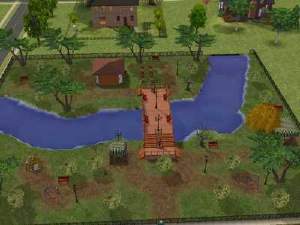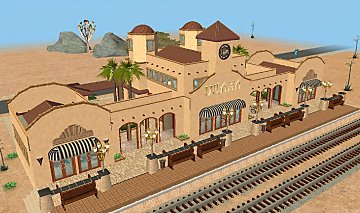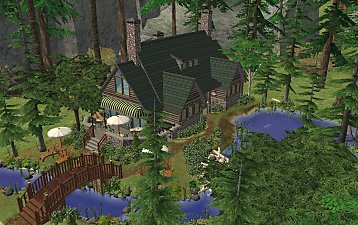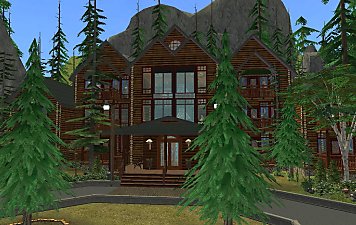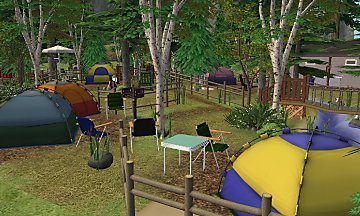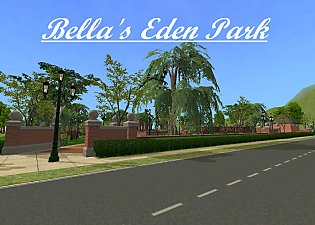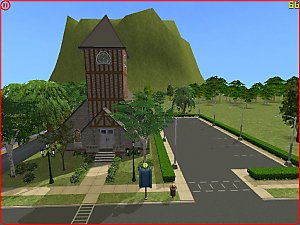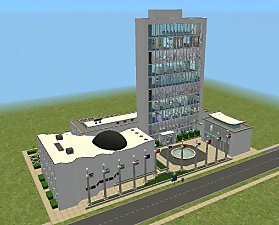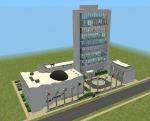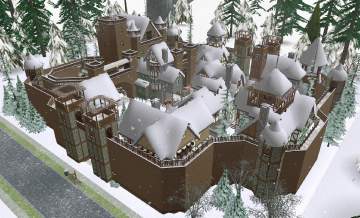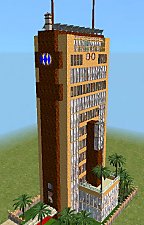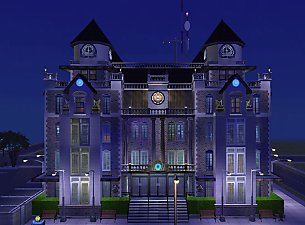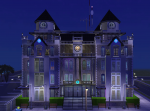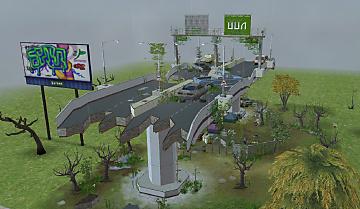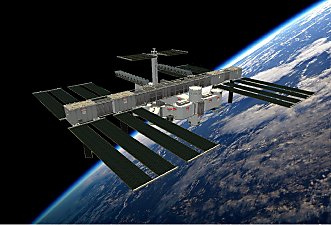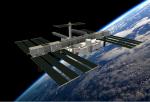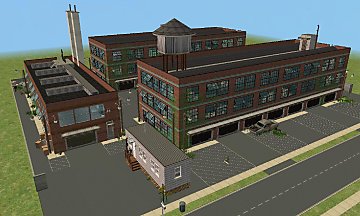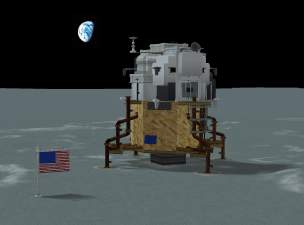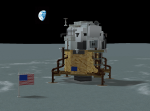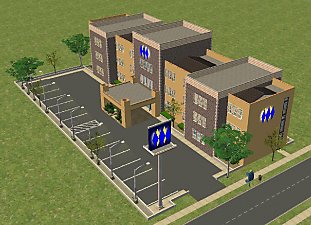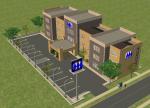 Union Grove Visitor Center - NO CC
Union Grove Visitor Center - NO CC

VC Prof.jpg - width=1417 height=852

VC Tall Trees.jpg - width=748 height=889

VC Information Desk.jpg - width=1363 height=885

VC Logger's Cabin Exhibit.jpg - width=1377 height=886

VC Back Deck.jpg - width=1379 height=886

VC Undergrowth.jpg - width=1194 height=851

VC Amphitheatre.jpg - width=1422 height=852

VC Creekside Exhibit.jpg - width=1395 height=883

VC Bookstore.jpg - width=1318 height=852

VC Picnic Area.jpg - width=1418 height=800

VC Bulletin Board.jpg - width=814 height=833

VC Boardwalks.jpg - width=1426 height=845

VC Front.jpg - width=1428 height=812

VC Foundation.jpg - width=1384 height=884

VC 1st Floor & Shell Outline.jpg - width=1378 height=888

VC Roof.jpg - width=1367 height=873
















The main Visitor Center of Temple Mountains National Park is on the southern boundary of the park, near where the railroad, and later the highway, climb up into the mountains. However, as more and more visitors began arriving in their own cars in the 1940’s, several scenic drives were constructed, giving easier access to some of the park’s more popular resources. At the end of the 25-mile Salvation Valley Drive, a grove of giant Utah Sequoia trees (Sequoiadendron Utahensis) became a very popular destination, so in 1948, a small Visitor Center was constructed near several of these enormous trees.
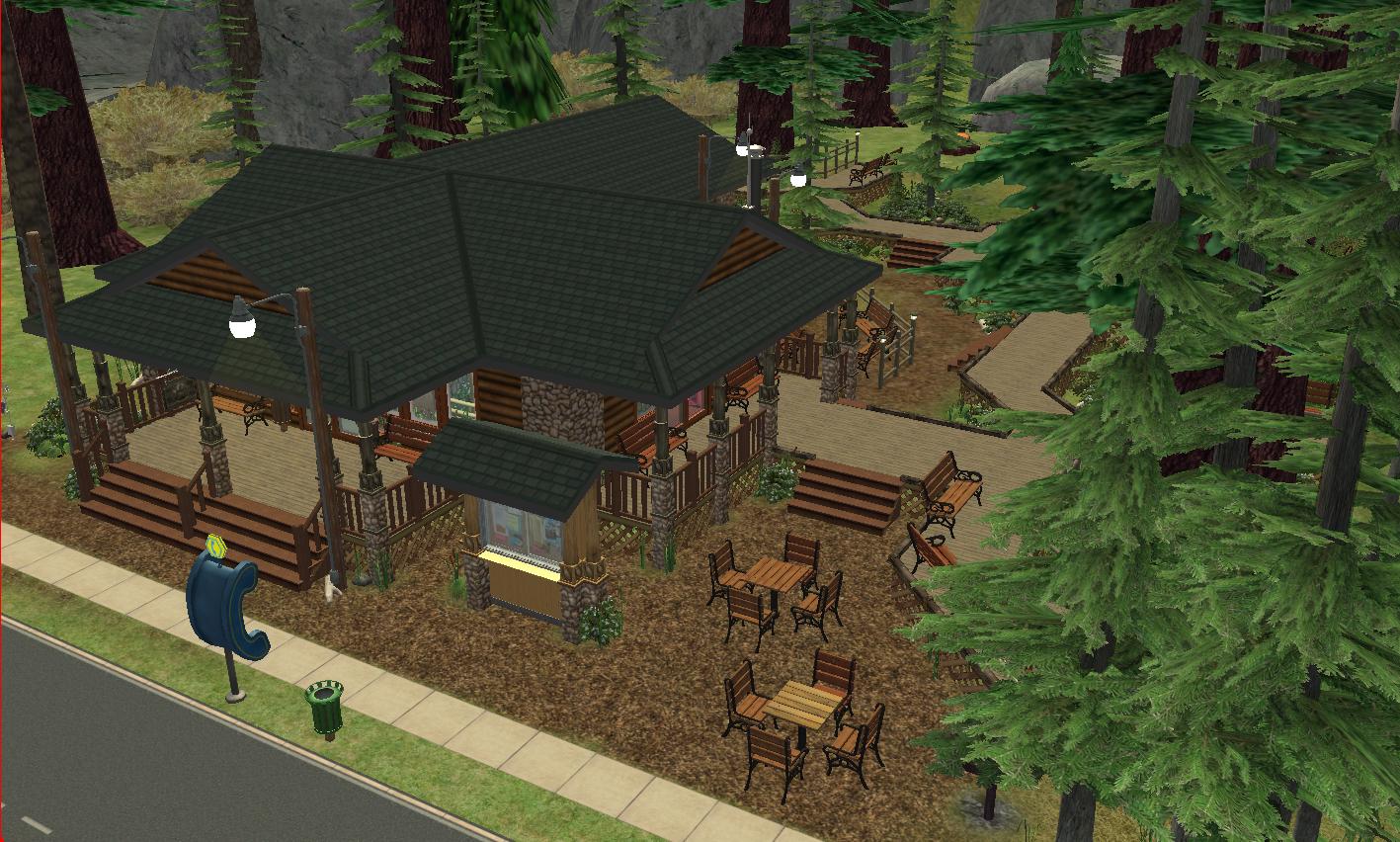
This grove of Utah Sequoia was the first discovered by European explorers in 1866, as members of the Young-Powell expedition were crossing the Temple Mountains in search of an easy mid-latitude path through the range. As the expedition had been dispatched during the American Civil War by President Lincoln, they named the grove in honor of the Union, making note of the cool temperatures and dense stands of timber, compared to the hot high-desert scrublands and dry forests of most of the region. After the Civil War ended, thousands of former soldiers from both sides of the conflict headed west, seeking their fortunes in gold mines, ranches, and timber harvesting endeavors. A small band of these mountain men settled in Temple Mountains, and seeing great potential in the amount of timber available, set up a sawmill alongside Salvation Creek, and started logging the old-growth forests. This was only profitable for a short time though, as the mountains were too remote to make shipping the lumber economical, and no gold rush ever flooded the region with miners and homesteaders. One of the Visitor Center’s exhibits chronicles this chapter in the history of the Temple Mountains region, with a mock-up of one of these loggers’ cabins.
After the timber industry in the region dwindled, the Temple Mountains attracted relatively little attention, as it was solidly in the middle of one of the least-densely inhabited areas of the country. In 1902, then-President Theodore Roosevelt established Temple Mountains National Forest Preserve, giving the area its first federally-protected status. It was not until 1920, under then-President Woodrow Wilson, however, that Temple Mountains would be established as a National Park. Once established, the park gradually began to see higher visitation, with its surprising ecosystem appreciated in its own right, rather than for its potential as lumber. The ATSF Railway created the Silverado Hotel in the southern reaches of the park, and with a luxurious railroad hotel available, more and more visitors began appearing. By the 1960s, the park was receiving more than one million visitors every year, many still arriving by train, but with the majority now coming in their own cars and camping in various campgrounds throughout the mountains. As many of these visitors would never have encountered an ecosystem like this before, the National Park took steps to ensure that heavily-visited areas like Union Grove would be protected well enough that future generations would still have something to visit and enjoy. The networks of social trails through the grove were rehabilitated, and a set of raised boardwalks were constructed, keeping foot traffic away from the delicate root systems of the Utah Sequoia, as well as allowing the forest undergrowth to recover.
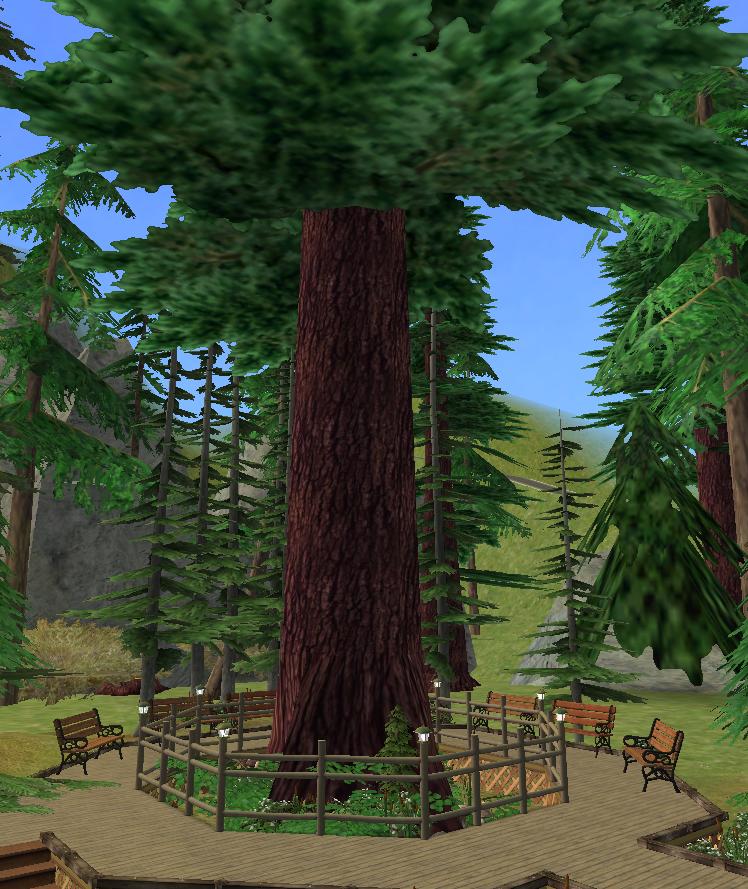
Once the nearby Elk Ridge Campground was finished, several dozen families were often in the area around the Union Grove Visitor Center for days at a time, so more and more Ranger programs were offered. Most were guided walks along the boardwalk, with stops in the semicircular amphitheatres at the foot of the three nearest Utah Sequoia for the Park Ranger to talk about the trees and the forest ecosystem. Longer evening campfire programs would be held either in the Elk Ridge Campground campfire circle, or in the small amphitheatre behind the Visitor Center. Here, Rangers could give more in-depth programs on the National Park, with topics ranging from dendrochronology (the study of tree rings to learn about the environmental history of the region) to the historic timber industry, to the geologic forces that had shaped the Temple Mountains themselves.
Shorter programs geared for younger visitors would often also visit the streamside exhibit inside the Visitor Center itself, as small children seem irresistibly drawn towards running water and muddy creek banks. The exhibit is a rendering of a tributary of Salvation Creek, which flows by at the bottom of the valley, and gives visitors without the time to hike down to the creek itself a chance to learn about the riparian ecosystem it supports (as well as letting children splash in the “creek” that flows through the exhibit)
The National Park cooperating association also operates the Visitor Center bookstore, located at the back of the building, where visitors can purchase books on the National Park, small souvenirs, hiking clothes and gear, and of course for the kids, more engaging “fun” gifts like ant farms and stuffed bears are also available.
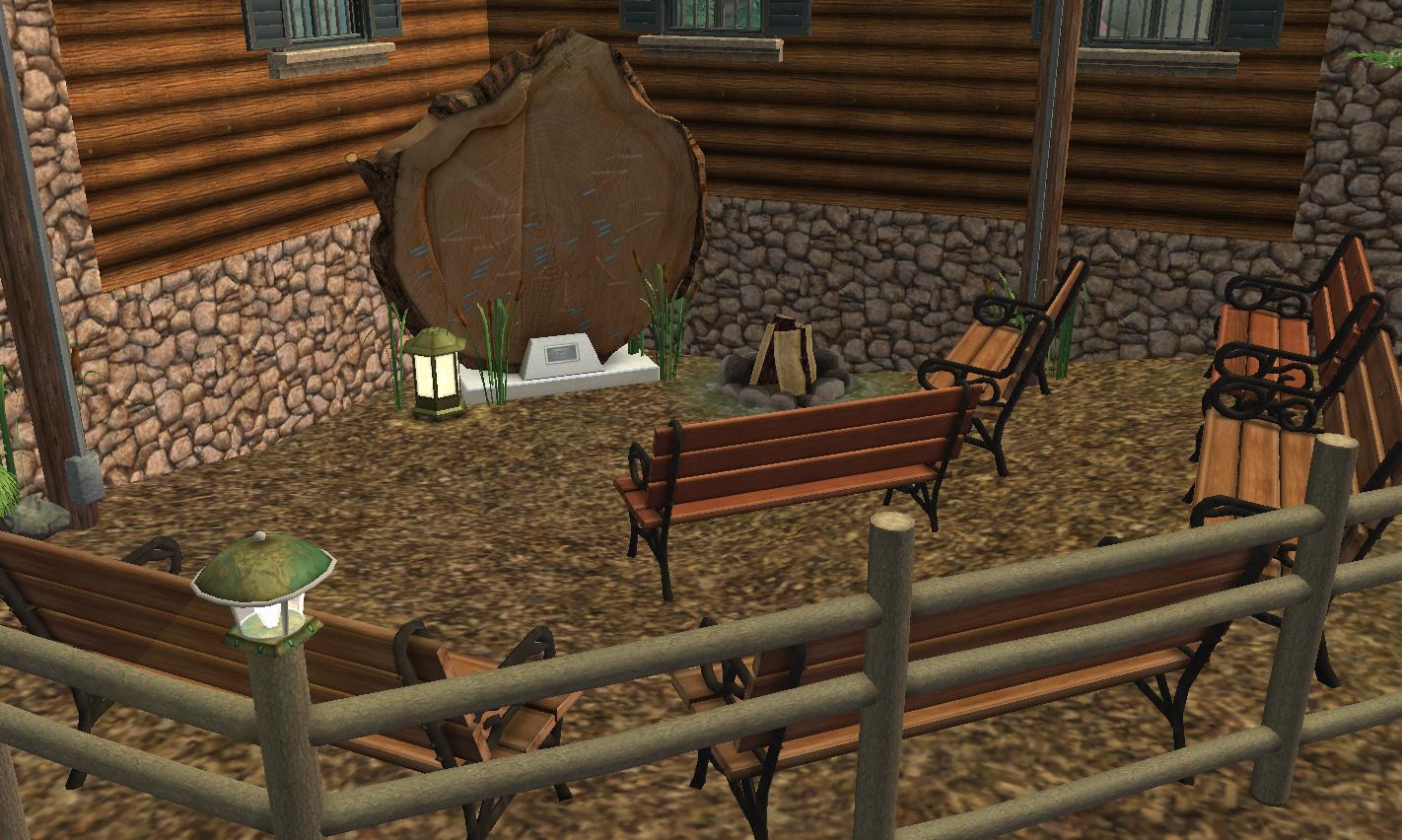
In front of the Visitor Center, a small picnic area as available for any visitors to use. The barbecue grill is also free to the public, (forest fire danger permitting, of course!) An outdoor bulletin board is also present, so that visitors who arrive while the main building is closed can still be kept appraised of any current issue notifications and warnings (on the front side), as well as educated about some of the insect and plant communities often seen in the area around Union Grove (on the back).
While not as busy as the southern parts of the park, Union Grove is still almost always featured on lists of the top ten things to see in the Temple Mountains, and tens of thousands of visitors every year pass through this area. On your visit, be sure to check in with the Park Ranger at the desk to see if there are any ranger programs being offered soon!
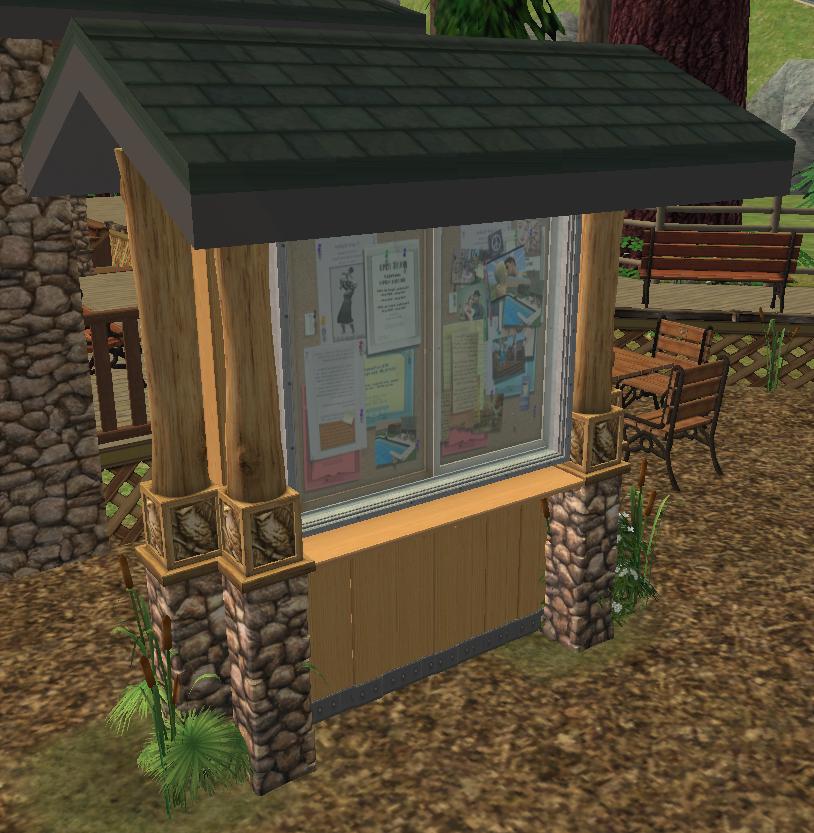
(I turned off neighborhood decorations for the lower level floor plan shots, since the three giant trees blocked much of the view from that high up)
I’ll admit, this building is a little plain for my taste… but then again, 2/3rds of the Visitor Centers that I’ve worked at as a Ranger myself have been rather dull architecturally-speaking too, so in some regards I think that’s exactly what I needed to achieve! Plus, as I’ve mentioned already, the first stop most visitors to a National Park make is the Visitor Center, so it seems appropriate that the first lot I share within my National Park be a Visitor Center too! The key elements of a Visitor Center are all present here- information desk, cooperating association bookstore, restrooms, bulletin board, and a variety of exhibits and walkthroughs on what all is available to see and do in the area, all in a building that fits in with its surroundings, and doesn’t overpower the natural landscape (which, after all, is what visitors really come to see!)
I’d kind of have liked to do a little more with the shell provided for this round, but my focus with this lot was on the “natural” landscape surrounding it, particularly the three giant sequoia trees on the lot. (FYI, there is no such thing as a “Utah Sequoia”… I just made it up. In reality, trees like this would find it impossible to survive in an environment as hot and dry as southern Utah… but the Temple Mountains aren’t real either, so if I can invent an entire mountain range, I think I can say that they have an environment that this fictional species of tree can survive in just fine!
This lot is (obviously) centered around the three large trees on the boardwalks in the rear of the lot. These trees are not actually "part" of the lot- they are the largest BV trees from the neighborhood decoration bin, placed so as to display within this lot. To do this requires tricking the game somewhat- what you'll want to do is place this lot where you want it, then use one of the neighborhood decoration items that CAN be placed over a lot, and place it at the three locations where the trees are supposed to display. Once you've done that, move the lot or bulldoze it, place the trees overlapping the other neighborhood deco you just placed, delete the extra deco, and then delete the trees. Move the lot back, and use the Neighborhood Deco tab's "undo" button to replace the trees. They won't be part of the lot, but they will appear on it as seen above. Once there, you may want to rearrange the LOT decorations to better conceal the base of the trees- the screenshots attached should give you an idea how that works best.
This lot will set any Sims who want to operate their own NPS Visitor Center back about $150,000.
This lot was originally created for a contest, and as such, was not initially playable. However, I think I have managed to fix all the problems that would have prevented Sims from being able to use the lot- there are a few idiosyncrasies leftover that may not be useful in normal gameplay, but they shouldn't detract from it either. I have playtested a clone of the lot as uploaded and found no glaring issues- if you find any in your gameplay, please let me know! Enjoy your visit to Temple Mountains National Park, and get out there and explore some of your REAL National Parks sometime this year too!
Lot Size: 3x4
Lot Price (furnished): $150,338
|
Union Grove Visitor Center.zip
Download
Uploaded: 16th Jul 2016, 1.31 MB.
1,716 downloads.
|
||||||||
| For a detailed look at individual files, see the Information tab. | ||||||||
Install Instructions
1. Download: Click the download link to save the .rar or .zip file(s) to your computer.
2. Extract the zip, rar, or 7z file.
3. Install: Double-click on the .sims2pack file to install its contents to your game. The files will automatically be installed to the proper location(s).
- You may want to use the Sims2Pack Clean Installer instead of the game's installer, which will let you install sims and pets which may otherwise give errors about needing expansion packs. It also lets you choose what included content to install. Do NOT use Clean Installer to get around this error with lots and houses as that can cause your game to crash when attempting to use that lot. Get S2PCI here: Clean Installer Official Site.
- For a full, complete guide to downloading complete with pictures and more information, see: Game Help: Downloading for Fracking Idiots.
- Custom content not showing up in the game? See: Game Help: Getting Custom Content to Show Up.
Loading comments, please wait...
Uploaded: 16th Jul 2016 at 4:40 AM
Updated: 16th Jul 2016 at 4:51 AM
#no cc, #vacation contest, #national park, #national park service, #temple mountains, #Utah, #mountains, #cliffs, #west, #forest, #sequoia, #visitor center, #tourist, #boardwalk, #redwood, #trail, #picnic, #creek
Hidden Creek Refectory – NO CC
Silverado Lodge – NO CC
Elk Ridge Campground – NO CC
-
by RoyalHankey 24th Oct 2006 at 7:27am
 +6 packs
2 6k 1
+6 packs
2 6k 1 Family Fun
Family Fun
 University
University
 Glamour Life
Glamour Life
 Nightlife
Nightlife
 Open for Business
Open for Business
 Pets
Pets
-
Cárdenas Rail Station & Harvey House - NO CC
by Zarathustra 16th Jul 2016 at 4:40am
 +17 packs
11 16.5k 57
+17 packs
11 16.5k 57 Happy Holiday
Happy Holiday
 Family Fun
Family Fun
 University
University
 Glamour Life
Glamour Life
 Nightlife
Nightlife
 Celebration
Celebration
 Open for Business
Open for Business
 Pets
Pets
 H&M Fashion
H&M Fashion
 Teen Style
Teen Style
 Seasons
Seasons
 Kitchen & Bath
Kitchen & Bath
 Bon Voyage
Bon Voyage
 Free Time
Free Time
 Ikea Home
Ikea Home
 Apartment Life
Apartment Life
 Mansion and Garden
Mansion and Garden
-
Hidden Creek Refectory - NO CC
by Zarathustra 16th Jul 2016 at 4:41am
 +17 packs
10 20k 49
+17 packs
10 20k 49 Happy Holiday
Happy Holiday
 Family Fun
Family Fun
 University
University
 Glamour Life
Glamour Life
 Nightlife
Nightlife
 Celebration
Celebration
 Open for Business
Open for Business
 Pets
Pets
 H&M Fashion
H&M Fashion
 Teen Style
Teen Style
 Seasons
Seasons
 Kitchen & Bath
Kitchen & Bath
 Bon Voyage
Bon Voyage
 Free Time
Free Time
 Ikea Home
Ikea Home
 Apartment Life
Apartment Life
 Mansion and Garden
Mansion and Garden
-
by Zarathustra 16th Jul 2016 at 4:41am
 +17 packs
13 20.2k 47
+17 packs
13 20.2k 47 Happy Holiday
Happy Holiday
 Family Fun
Family Fun
 University
University
 Glamour Life
Glamour Life
 Nightlife
Nightlife
 Celebration
Celebration
 Open for Business
Open for Business
 Pets
Pets
 H&M Fashion
H&M Fashion
 Teen Style
Teen Style
 Seasons
Seasons
 Kitchen & Bath
Kitchen & Bath
 Bon Voyage
Bon Voyage
 Free Time
Free Time
 Ikea Home
Ikea Home
 Apartment Life
Apartment Life
 Mansion and Garden
Mansion and Garden
-
by Zarathustra 16th Jul 2016 at 4:41am
 +17 packs
7 22.7k 55
+17 packs
7 22.7k 55 Happy Holiday
Happy Holiday
 Family Fun
Family Fun
 University
University
 Glamour Life
Glamour Life
 Nightlife
Nightlife
 Celebration
Celebration
 Open for Business
Open for Business
 Pets
Pets
 H&M Fashion
H&M Fashion
 Teen Style
Teen Style
 Seasons
Seasons
 Kitchen & Bath
Kitchen & Bath
 Bon Voyage
Bon Voyage
 Free Time
Free Time
 Ikea Home
Ikea Home
 Apartment Life
Apartment Life
 Mansion and Garden
Mansion and Garden
-
by plumbobhaver 18th Apr 2021 at 9:17pm
 +17 packs
1 2.1k 9
+17 packs
1 2.1k 9 Happy Holiday
Happy Holiday
 Family Fun
Family Fun
 University
University
 Glamour Life
Glamour Life
 Nightlife
Nightlife
 Celebration
Celebration
 Open for Business
Open for Business
 Pets
Pets
 H&M Fashion
H&M Fashion
 Teen Style
Teen Style
 Seasons
Seasons
 Kitchen & Bath
Kitchen & Bath
 Bon Voyage
Bon Voyage
 Free Time
Free Time
 Ikea Home
Ikea Home
 Apartment Life
Apartment Life
 Mansion and Garden
Mansion and Garden
-
by vulcansixam 20th Aug 2024 at 1:05am
 +17 packs
2k 9
+17 packs
2k 9 Happy Holiday
Happy Holiday
 Family Fun
Family Fun
 University
University
 Glamour Life
Glamour Life
 Nightlife
Nightlife
 Celebration
Celebration
 Open for Business
Open for Business
 Pets
Pets
 H&M Fashion
H&M Fashion
 Teen Style
Teen Style
 Seasons
Seasons
 Kitchen & Bath
Kitchen & Bath
 Bon Voyage
Bon Voyage
 Free Time
Free Time
 Ikea Home
Ikea Home
 Apartment Life
Apartment Life
 Mansion and Garden
Mansion and Garden
-
by vulcansixam updated 1st Sep 2024 at 11:57pm
 +17 packs
10 3.6k 18
+17 packs
10 3.6k 18 Happy Holiday
Happy Holiday
 Family Fun
Family Fun
 University
University
 Glamour Life
Glamour Life
 Nightlife
Nightlife
 Celebration
Celebration
 Open for Business
Open for Business
 Pets
Pets
 H&M Fashion
H&M Fashion
 Teen Style
Teen Style
 Seasons
Seasons
 Kitchen & Bath
Kitchen & Bath
 Bon Voyage
Bon Voyage
 Free Time
Free Time
 Ikea Home
Ikea Home
 Apartment Life
Apartment Life
 Mansion and Garden
Mansion and Garden
-
United Nations NY Headquarters - NO CC
by Zarathustra updated 2nd Jun 2016 at 3:53am
A place where people (or Sims) of all nations can come together to resolve their differences peacefully. more...
 +17 packs
23 19.3k 29
+17 packs
23 19.3k 29 Happy Holiday
Happy Holiday
 Family Fun
Family Fun
 University
University
 Glamour Life
Glamour Life
 Nightlife
Nightlife
 Celebration
Celebration
 Open for Business
Open for Business
 Pets
Pets
 H&M Fashion
H&M Fashion
 Teen Style
Teen Style
 Seasons
Seasons
 Kitchen & Bath
Kitchen & Bath
 Bon Voyage
Bon Voyage
 Free Time
Free Time
 Ikea Home
Ikea Home
 Apartment Life
Apartment Life
 Mansion and Garden
Mansion and Garden
-
Stormwall - Medieval Walled City - NO CC
by Zarathustra 13th Dec 2019 at 7:18pm
A prosperous medieval city surrounded by high stone walls to defend against the frozen northern wilderness that surrounds it. more...
 +17 packs
34 35.5k 127
+17 packs
34 35.5k 127 Happy Holiday
Happy Holiday
 Family Fun
Family Fun
 University
University
 Glamour Life
Glamour Life
 Nightlife
Nightlife
 Celebration
Celebration
 Open for Business
Open for Business
 Pets
Pets
 H&M Fashion
H&M Fashion
 Teen Style
Teen Style
 Seasons
Seasons
 Kitchen & Bath
Kitchen & Bath
 Bon Voyage
Bon Voyage
 Free Time
Free Time
 Ikea Home
Ikea Home
 Apartment Life
Apartment Life
 Mansion and Garden
Mansion and Garden
-
by Zarathustra 27th Jan 2014 at 7:30pm
The wealthiest of Sims would never stoop so low as to live with common folk. For these elites, Atlantis Heights was constructed. more...
 +15 packs
10 10.6k 32
+15 packs
10 10.6k 32 University
University
 Glamour Life
Glamour Life
 Nightlife
Nightlife
 Celebration
Celebration
 Open for Business
Open for Business
 Pets
Pets
 H&M Fashion
H&M Fashion
 Teen Style
Teen Style
 Seasons
Seasons
 Kitchen & Bath
Kitchen & Bath
 Bon Voyage
Bon Voyage
 Free Time
Free Time
 Ikea Home
Ikea Home
 Apartment Life
Apartment Life
 Mansion and Garden
Mansion and Garden
-
SimCity Central Police Station - NO CC
by Zarathustra 29th Sep 2023 at 8:19pm
 +17 packs
5 4.2k 17
+17 packs
5 4.2k 17 Happy Holiday
Happy Holiday
 Family Fun
Family Fun
 University
University
 Glamour Life
Glamour Life
 Nightlife
Nightlife
 Celebration
Celebration
 Open for Business
Open for Business
 Pets
Pets
 H&M Fashion
H&M Fashion
 Teen Style
Teen Style
 Seasons
Seasons
 Kitchen & Bath
Kitchen & Bath
 Bon Voyage
Bon Voyage
 Free Time
Free Time
 Ikea Home
Ikea Home
 Apartment Life
Apartment Life
 Mansion and Garden
Mansion and Garden
-
by Zarathustra 19th Nov 2022 at 5:06pm
 +17 packs
33 5.5k 52
+17 packs
33 5.5k 52 Happy Holiday
Happy Holiday
 Family Fun
Family Fun
 University
University
 Glamour Life
Glamour Life
 Nightlife
Nightlife
 Celebration
Celebration
 Open for Business
Open for Business
 Pets
Pets
 H&M Fashion
H&M Fashion
 Teen Style
Teen Style
 Seasons
Seasons
 Kitchen & Bath
Kitchen & Bath
 Bon Voyage
Bon Voyage
 Free Time
Free Time
 Ikea Home
Ikea Home
 Apartment Life
Apartment Life
 Mansion and Garden
Mansion and Garden
-
International Space Station - NO CC
by Zarathustra updated 1st Jun 2016 at 3:54am
This orbital station provides a place for astronauts to live and work in a microgravity environment, high above Earth's surface. more...
 +17 packs
32 28.7k 81
+17 packs
32 28.7k 81 Happy Holiday
Happy Holiday
 Family Fun
Family Fun
 University
University
 Glamour Life
Glamour Life
 Nightlife
Nightlife
 Celebration
Celebration
 Open for Business
Open for Business
 Pets
Pets
 H&M Fashion
H&M Fashion
 Teen Style
Teen Style
 Seasons
Seasons
 Kitchen & Bath
Kitchen & Bath
 Bon Voyage
Bon Voyage
 Free Time
Free Time
 Ikea Home
Ikea Home
 Apartment Life
Apartment Life
 Mansion and Garden
Mansion and Garden
-
by Zarathustra 11th Dec 2014 at 10:54am
For the gritty, industrial quarter of any city, these abandoned shipping warehouses are sure to cause property values to plummet! more...
 +16 packs
33 38.8k 180
+16 packs
33 38.8k 180 Family Fun
Family Fun
 University
University
 Glamour Life
Glamour Life
 Nightlife
Nightlife
 Celebration
Celebration
 Open for Business
Open for Business
 Pets
Pets
 H&M Fashion
H&M Fashion
 Teen Style
Teen Style
 Seasons
Seasons
 Kitchen & Bath
Kitchen & Bath
 Bon Voyage
Bon Voyage
 Free Time
Free Time
 Ikea Home
Ikea Home
 Apartment Life
Apartment Life
 Mansion and Garden
Mansion and Garden
-
Hidden Creek Refectory - NO CC
by Zarathustra 16th Jul 2016 at 4:41am
Vacation Contest Round 2 - Historic lodge and snack bar next to a beaver pond. more...
 +17 packs
10 20k 49
+17 packs
10 20k 49 Happy Holiday
Happy Holiday
 Family Fun
Family Fun
 University
University
 Glamour Life
Glamour Life
 Nightlife
Nightlife
 Celebration
Celebration
 Open for Business
Open for Business
 Pets
Pets
 H&M Fashion
H&M Fashion
 Teen Style
Teen Style
 Seasons
Seasons
 Kitchen & Bath
Kitchen & Bath
 Bon Voyage
Bon Voyage
 Free Time
Free Time
 Ikea Home
Ikea Home
 Apartment Life
Apartment Life
 Mansion and Garden
Mansion and Garden
-
Apollo 11 - Tranquility Base - NO CC
by Zarathustra 28th Jul 2019 at 10:48pm
At Tranquility Base in the Moon's Sea of Tranquility were taken the first steps by humanity on another world. more...
 +17 packs
10 6.4k 12
+17 packs
10 6.4k 12 Happy Holiday
Happy Holiday
 Family Fun
Family Fun
 University
University
 Glamour Life
Glamour Life
 Nightlife
Nightlife
 Celebration
Celebration
 Open for Business
Open for Business
 Pets
Pets
 H&M Fashion
H&M Fashion
 Teen Style
Teen Style
 Seasons
Seasons
 Kitchen & Bath
Kitchen & Bath
 Bon Voyage
Bon Voyage
 Free Time
Free Time
 Ikea Home
Ikea Home
 Apartment Life
Apartment Life
 Mansion and Garden
Mansion and Garden
-
Generic Hotel Chain Franchise - NO CC
by Zarathustra updated 31st May 2016 at 4:54pm
Not every hotel stands out... sometimes all you need is a reliable place to spend the night during your travels! more...
 +17 packs
18 22.3k 47
+17 packs
18 22.3k 47 Happy Holiday
Happy Holiday
 Family Fun
Family Fun
 University
University
 Glamour Life
Glamour Life
 Nightlife
Nightlife
 Celebration
Celebration
 Open for Business
Open for Business
 Pets
Pets
 H&M Fashion
H&M Fashion
 Teen Style
Teen Style
 Seasons
Seasons
 Kitchen & Bath
Kitchen & Bath
 Bon Voyage
Bon Voyage
 Free Time
Free Time
 Ikea Home
Ikea Home
 Apartment Life
Apartment Life
 Mansion and Garden
Mansion and Garden
Packs Needed
| Base Game | |
|---|---|
 | Sims 2 |
| Expansion Pack | |
|---|---|
 | University |
 | Nightlife |
 | Open for Business |
 | Pets |
 | Seasons |
 | Bon Voyage |
 | Free Time |
 | Apartment Life |
| Stuff Pack | |
|---|---|
 | Happy Holiday |
 | Family Fun |
 | Glamour Life |
 | Celebration |
 | H&M Fashion |
 | Teen Style |
 | Kitchen & Bath |
 | Ikea Home |
 | Mansion and Garden |
About Me
You might call me a CC-atheist. While I'll use every cheat code in the book, I won't use anything that Maxis didn't ship with the game in one fashion or another. Ergo, you can rest assured that all my lots are CC-free.
Some creators describe themselves as constantly juggling projects. I suppose I do that too, except I'm really really bad at juggling, so I just throw lots of projects as high as I can, and sometimes forget all about them until they come crashing down on my head!
I won't *exactly* do requests, but since I pivot from lot to lot constantly, if there's a place you hope to see from me, there's a good chance that I've already started it! I make no promises, but feel free to ask about lots you want to see- you might inspire me to finish something!
My lots are my own work- I put a lot of effort into them, so have fun with them, use them for storytelling or making Sim movies, but please don't reupload them, in whole or in part, anywhere, including here on MTS!
One day I will rule the world with an iron fist and all will kneel before me.

 Sign in to Mod The Sims
Sign in to Mod The Sims Union Grove Visitor Center - NO CC
Union Grove Visitor Center - NO CC
